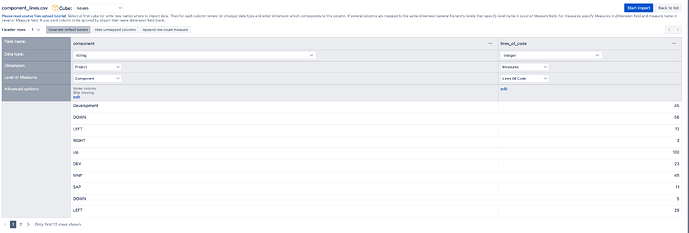Hi,
I would like to get the number of defects that I have, in each of the components of my software, for every 1k lines of code. The problem is that I have this data coming from two different sources:
- #defects per component: Jira
- #lines of code per component: SonarQube
I set up an import from SonarQube and I can get the information in eazyBI (see the attached picture) but I don’t know how to proceed with the mapping to be able to get the information. Could you help me with that? Thank you
Hi @Joaquin_Gago,
You reached out to the eazyBI support email with the same question. There, we suggested the following:
While eazyBI supports additional data import into the Jira issues cube, the matter is not simple with the Components field. They are defined at the Project level, and several Projects can have Components with the same name while their IDs differ. eazyBI follows the structure established in Jira, and you can find Components within the Project dimension “Component” level, below the “Project” level. Please view the screenshot below:
My Projects have Components with the same name. In such a case, the additional data mapping would tie the lines of code only to the first Components it finds and not to Components under all Projects. In my case, the lines of code would be tied to the Components under the “DEMO Alpha” Project.
Suppose your Components are not shared across several Projects. In that case, you can select the Project dimension “Component” level in the data mapping for the column representing the Component. Select the “Name column” and “Skip missing” options. The data mapping could look similar to the one below:
If your Projects have similarly named Components, and you want to tie the data to each Project Component, we would have to think of a workaround. The first that pops into my mind is adding another column, Component ID, unique to each Project Component. That would require data transformation with custom JavaScript code.
After that, when using the additionally imported measures and you want to select other dimensions of the Jira issues cube, create new calculated measures to reset the context of the other dimensions for this additionally imported measure. That is required because the additionally imported measure is tied only to the dimension you use in the data mapping and has no context for others. For that, use the DefaultContext() function - DefaultContext.
Best,
Roberts // support@eazybi.com


